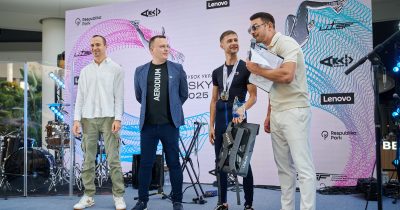
Respublika Park shopping mall presents documentary film about veteran Stepan Korobkin who conquered Kilimanjaro


 24.04.2019 08:10
24.04.2019 08:10With such eye-opening figures, it’s little wonder there’s so much excitement surrounding the future of online retail.
Ecommerce enjoyed a record-breaking year in 2018, with global sales revenues estimated to have reached $2.8 trillion, according to Statista. This year, this figure is expected to rise to $3.5 trillion. To put this in perspective, if the ecommerce industry were a country, it would slot into the fifth spot, ahead of the United Kingdom, whose GDP as of April 2018 was $2.61 trillion.
Amid all the hype about ecommerce, it’s easy to forget that this segment accounts for just 11.9 percent of the total retail sales around the world. Therefore, the market holds an extraordinary capacity for growth over the next decade.
Below, I identify the four trends that ecommerce entrepreneurs should pay the closest attention to:
Yes, we’ve heard quite a lot about big data over the past two years, but it’s not going away. As more people come to grips with this new resource, this effort will increasingly separate the successful from the less successful ecommerce businesses. And this division will not be limited to behemoth ecommerce businesses either, because mid-range competitors too are now using their data reserves to mine unique insights.
Big data, in fact, helps entrepreneurs analyze shopping behavior, trends and what products it is that are selling. It’s been proven to help ecommerce businesses make improvements in customer service, security and mobile commerce. It also powers the AI which is revolutionizing the industry (more on this below).
In short, big data is likely to power future developments in your ecommerce business. If you are planning on staying in the industry long term, you would be wise to study the latest developments.

Shoppers are growing used to the convenience of ecommerce, and entrepreneurs need to ensure that the customer experience meets those people’s growing expectations. The purchasing journey needs to be smooth, reassuring and secure. Stores also need to be quick to respond to queries and resolve issues.
One American Express study has found that more than half of Americans surveyed had canceled a purchase due to bad service. But take heart; you needn’t be the entrepreneur on the other end of that type of transaction. Instead, there are a number of ways you can deliver outstanding customer service:
Above all, understand that providing excellent customer service is no longer a bonus for an ecommerce business. It’s now the norm.
Without good, well-ordered data, you will not be able to embrace the latest technologies that can drive revenue to your ecommerce store. AI is already evident in many ecommerce stores. Those automated live chatbots, advanced data analytics and inventory management tools? They are all powered by AI.
However, there are examples of stores taking it to the next level to deliver a highly personalized experience. Outdoor wear brand, The North Face, has recently unveiled a digitalized personal shopper which can guide customers to products. There are also voice search and mobile shopping, which enable people to shop on the move.

One of the factors behind Amazon’s success is its advanced product recommendations algorithm, which drives up to 35 percent of the company’s total sales. Using the buyer’s shopping habits, interests and even browsing history, the ecommerce giant is able to promote the products the buyer is most likely to purchase.
Looking beyond Amazon, product recommendation engines have proven effective at delivering a personalized shopping experience and driving up revenue for stores. The key is to place those recommendations at optimum points in the purchasing process.
First, ensure you have recommended products visible to your shoppers on the home page or after the point that they sign in. Then, once they have added items to their basket, ensure you have suggested complementary items. You can also suggest items at checkout.
Entrepreneurs who take the proactive approach, embrace the latest advances in tech and make use of data will reap the rewards in ecommerce. As AI becomes more mainstream, it is essential that ecommerce business owners take personalization to the next level. Simply having a product recommendation plugin is no longer enough; you need to be proactive and utilize tools in the right way, with well-curated data, to maximize their potential.
From: entrepreneur.com
Read more –





